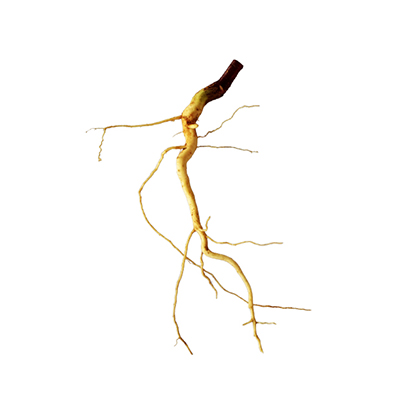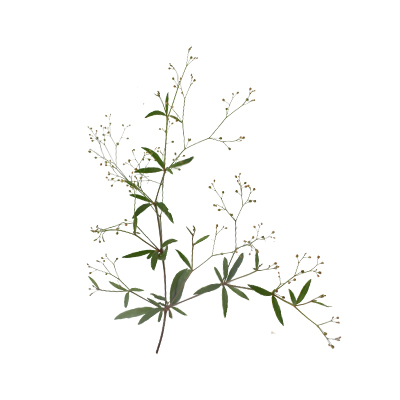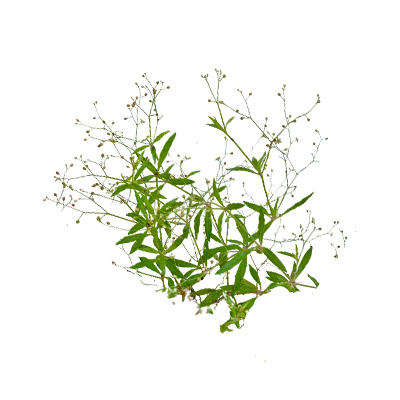Carpetweed
Trigastrotheca pentaphylla (L.) Thulin
Molluginaceae
Location in our garden
Principal
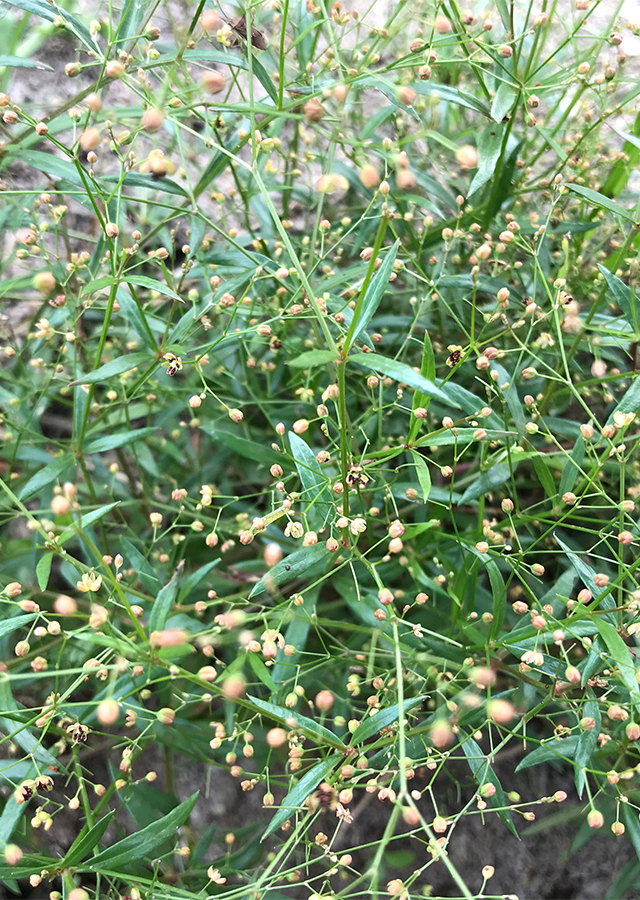
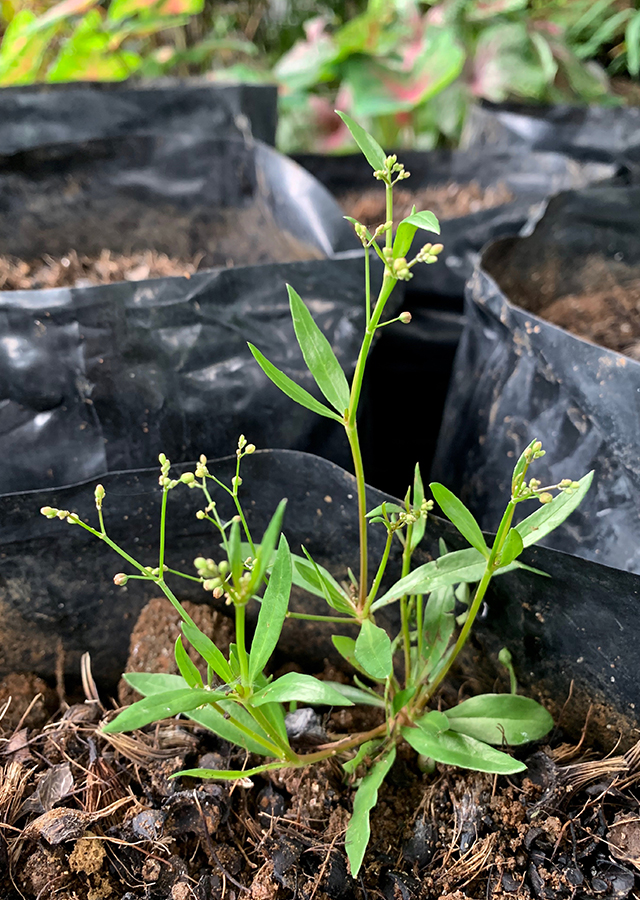
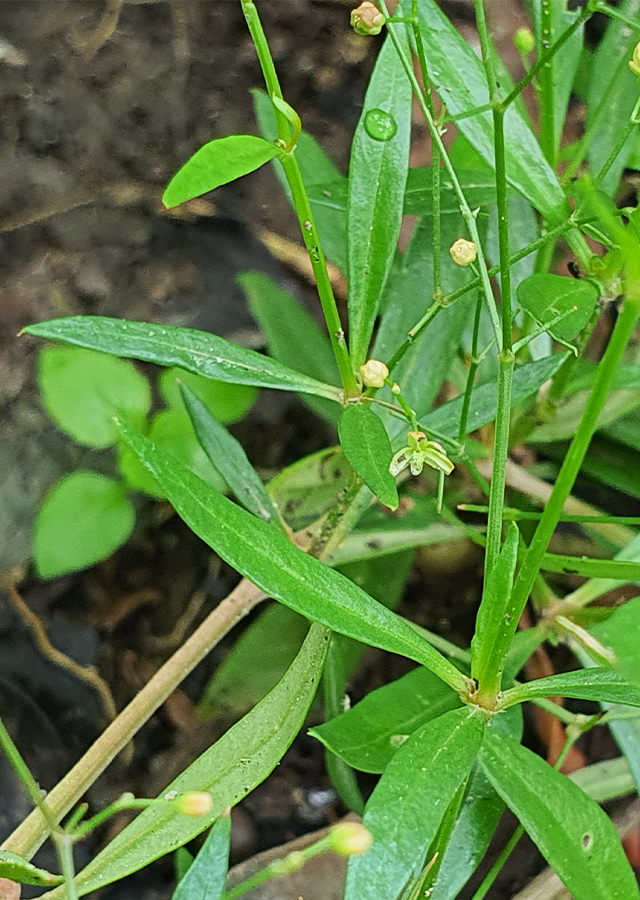
Synonym
Mollugo pentaphylla L.
Pharnaceum pentaphyllum (L.) Spreng.
Pharnaceum triphyllum Spreng.
Habitus
Herbaceous. An erect, annual herb with branches 10 to 40 cm in length
Part Used
The Whole Plant
Growing Requirements
Need Shade
Habitat
Rocky Areas
Grassland
Overview
The plant is distributed throughout South-East Asia and Malesia, Japan New Caledonia as a weed in cultivated areas, in open grasslands. Also occurs in India to Japan and southward to Malaya. A weed of minor importance. It is harvested from the wild for local use as a food and medicine. The whole plant is burnt to make a mosquito repellent.
Vernacular Names
Khet papra (Bengali), Su mi cao (Chinese), Mollugine (French), Zakuro sou (Japanese), Nyauli (Nepalese), Soi nok khao (Thailaind).
Agroecology
A plant of semi-arid to humid areas of the tropics, growing at low to medium elevations. The plant is a minor weed of cultivated ground. In cultivated areas, in regions with or without a pronounced dry season, in sunny or somewhat shaded, often sandy or stony sites, in fields, gardens, premises, railroad bands, teak forests; except lowland irrigated and rice fields.
Morphology
- Roots - a thin taproot, whitish or brown.
- Stems - freely branched from the base with thin stems, a slender, spreading or ascending, smooth.
- Leaves - simple, opposite, ovate to oblong-ovate, entire or slightly toothed, with acute tips and glandular spots on the lower surface.
- Flowers - pink or purplish and borne in racemes which are 8 to 15 cm long. Corolla bilabiate, exerted, and upper lip broader, subequally 4-fid, the lower lip entire. Petals pink or purplish, stamens exserted.
- Fruits - a capsule, opening with 3 valves, as long as the sepals, and nearly spherical.
- Seeds - many seeds which are dark chestnut, thin-walled, and covered with raised tubercular points.
Cultivation
Propagated by seeds, which are dispersed by water. It is widespread in anthropogenic habitats, and is therefore probably not at risk of genetic erosion.
Chemical Constituents
Flavonoids, saponins, terpenoids, alkaloids, steroids, glycosides, saponins, phenolic compounds, carotenoid, ascorbic acid, tannins and volatile oil.
Traditional Medicinal Uses
- The plant is antipyretic, antiseptic, appetizer, emmenagogue, laxative, stomachic, anticancer, antitoxic and diuretic agent.
- Leaves are bitter and antiperiodic.
- In India, leaves are used as bitter pot herb.
- In Java, used for sprue and mouth infections.
- In Taiwan folk medicine, it is used as anticancer, antitoxic, and diuretic.
- In China, soup is used to promote appetite; root decoction used for eye diseases.
- In Thailand, entire plant is used as antipyretic.
- In Bangladesh, stems and fruits are used in treatment of rheumatoid arthritis.
- The leaves are used externally as a poultice for sore legs.
